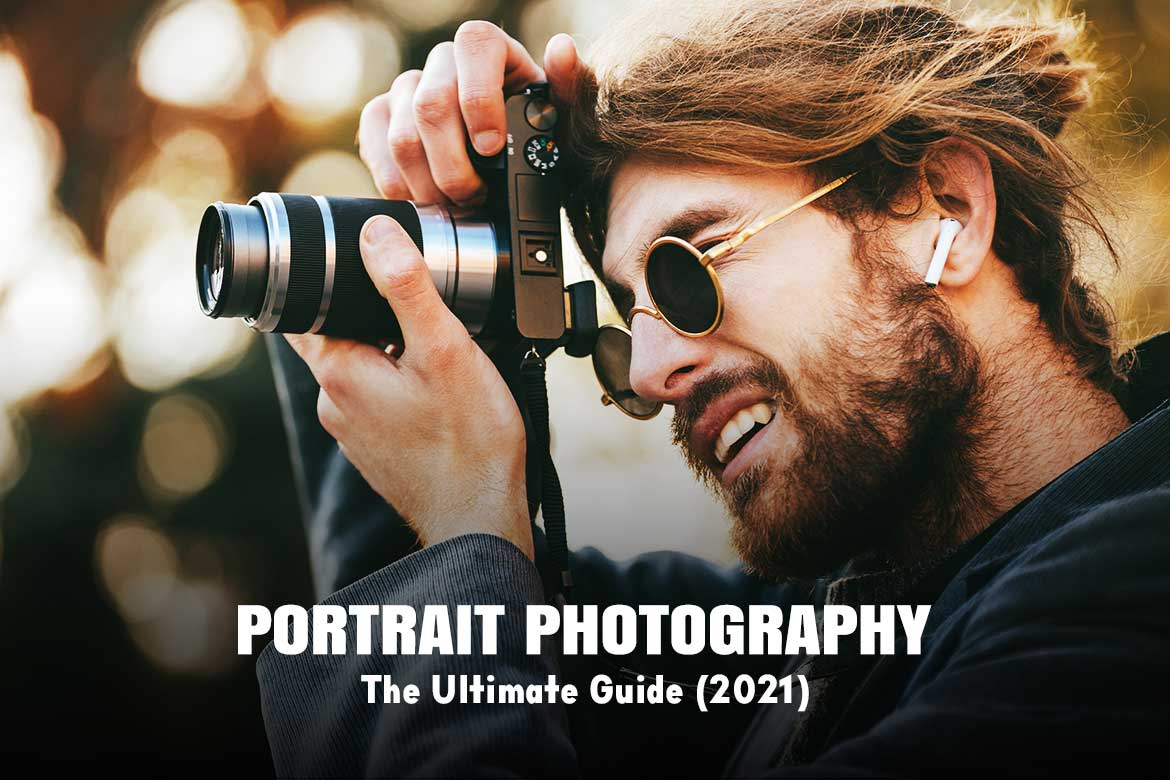What is a Portrait?
Portrait comes from the word ‘Portraiture’.
A portrait is a painting, photograph, sculpture, or other artistic representation of a person, in which the face and its expression is predominant. The intent is to display the likeness, personality, and even the mood ofHence Portrait Photography is aimed toward capturing the personality of a person or group of people by using effective lighting, backdrops, and poses.
Mona Lisa is probably the most famous and apt example of a Portrait

Types of Portrait Photography :
Portrait Photography can be divided into different types but essentially, they all have the same goal. The following are 7 different types of portrait photography that you should know.
1. Traditional Portrait Photography
Traditional portrait photography shows a subject smiling and looking at the camera. Traditional portrait photography is generally done in a studio with a background.
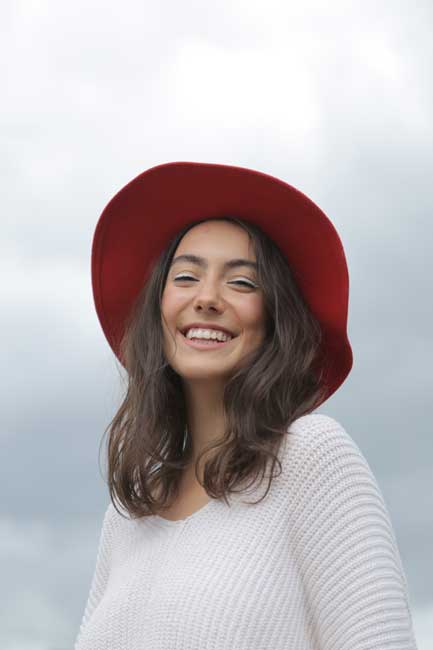
The focus should be on the subject’s face and show the top half of their body, usually the shoulders and above. Traditional Portrait Photography mainly focuses on the subject’s expression.
2. Glamour Portrait Photography
Glamour portrait photography focuses on the beauty of a person and the fashion aspect. It involves make-up artists, fashion clothing and accessories.
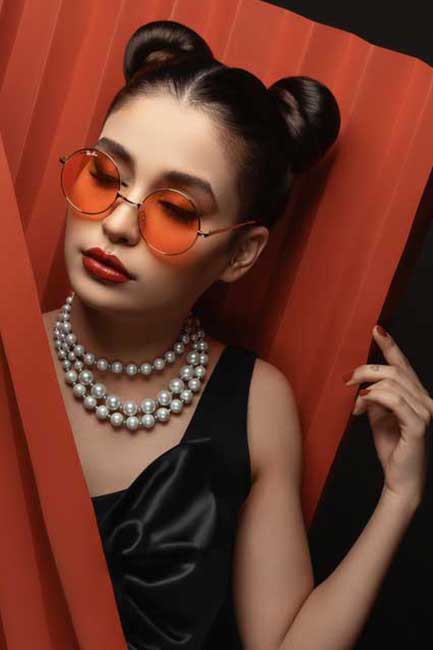
The focus is on overall appearance. Glamour Portrait Photography is usually done for models, cosmetic brands, fashion brands, etc.
3. Headshot Photography
Headshot Photography is the most common professional shoot. In almost any profession, headshots are needed. Headshot photography is a great way to have a shoot for multiple people in one go.
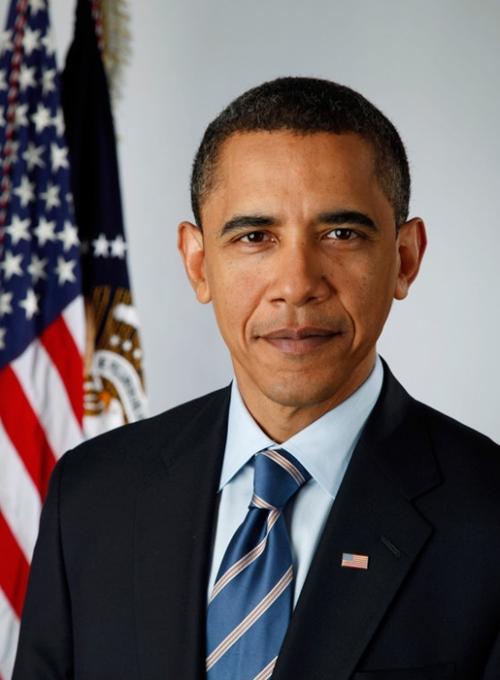
A headshot is generally meant a formal representation of a person for use in a professional setting. This type of photography is a good source of steady income.
4. Candid Portrait Photography
Candid Portrait photography is about capturing moments. The photographer captures the expression of the person without the person looking into the camera (posing). It is supposed to be the natural i.e without knowing that the moment is being photographed.
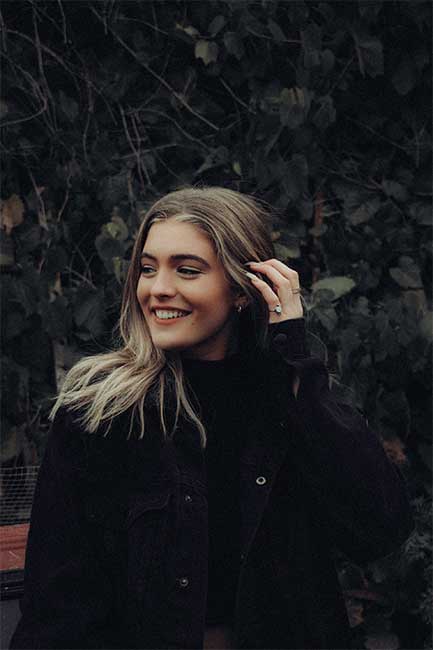
The goal of a candid portrait is to capture people in genuine moments. These types of portraits are popular among street photographers. Candid photographers capture genuine moments that becomes memories.
5. Family / Couple Portrait Photography
Portraits can include more than one person. There are family portraits as well as couples portraits. In an event like marriage, the photographs usually have more than 1 person in the shot.
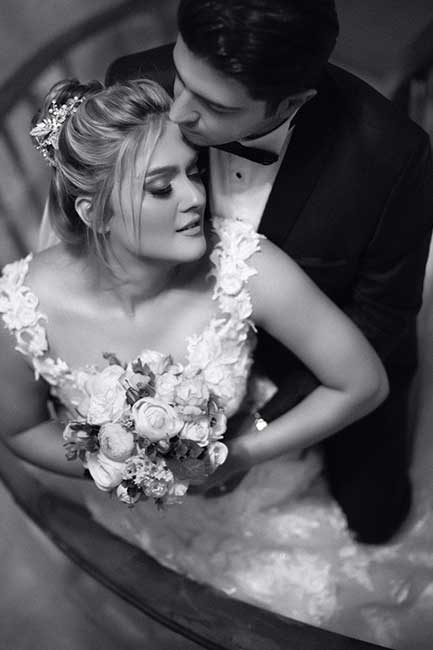
The goal in Family/Couples Portraits is to capture genuine emotions between people. It is always suggested to take multiple shots for each moment to have options while selecting the best images.
6. Selfie Portrait Photography
Selfies are very popular in the world, but the selfie portrait is more than a smartphone selfie. You are the photographer and the subject – this gives you flexibility and control over a lot of things. Selfie Portrait is also very beneficial to people who are shy in nature.
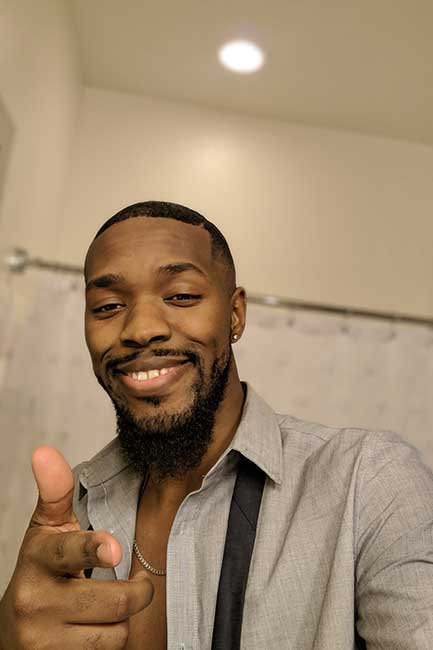
The best thing about Selfie Portrait Photography is that it forces you to come out of your comfort zone, analyse your shots and do the corrections on all levels by your self.
7. Environmental Portrait Photography
An environmental portrait photographer captures the environment along with the person, giving the photograph more meaning.
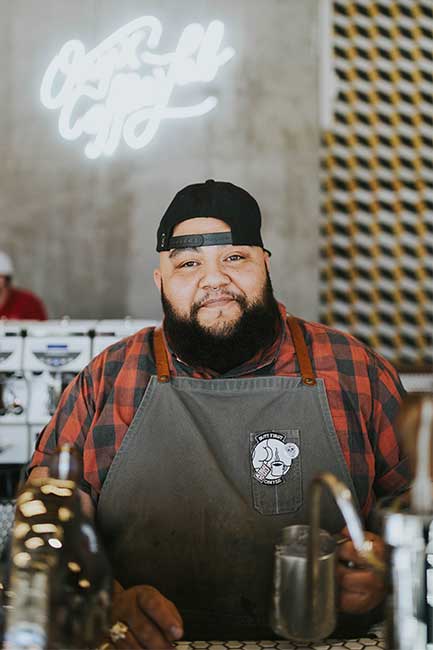
For Environment Portrait Photography, location is one of the most important factors. For example, if you’re shooting portraits of a chef then the kitchen can be a good location.
Lighting: The Secret Behind Good Photography
There are different light setups that can be done for Portrait Photography. Each light setup gives a different result. There is no right or wrong way of setting up the lights, it’s up to the photographer and his vision.
Still there are few key points regarding the light setup which should be kept in mind. We will be discussing a few of them.
High Key & Low Key Lighting
High Key : High-key lighting is a technique where the image is mostly free of shadows. The image has a background brighter than the subject. High-key lighting typically involves use of all three lights (or more) in the three-point lighting setup.
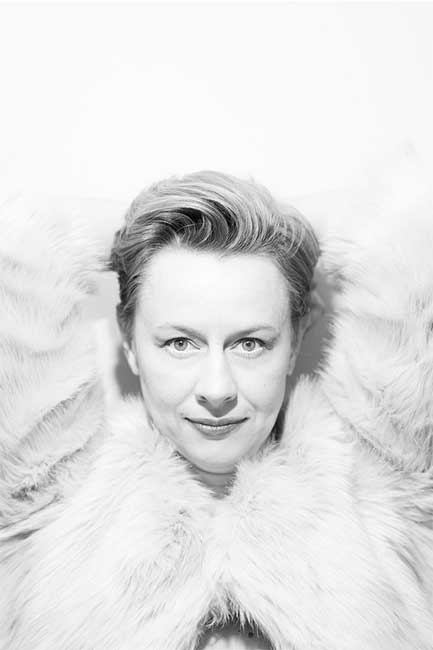
Low Key : Low-key lighting is a technique where only part of the subject is lit. The image has dark shadows, and a background darker than the subject. Low-key lighting typically involves the use of just one light in the three-point lighting setup. Some photographers sometimes use 2 lights also.
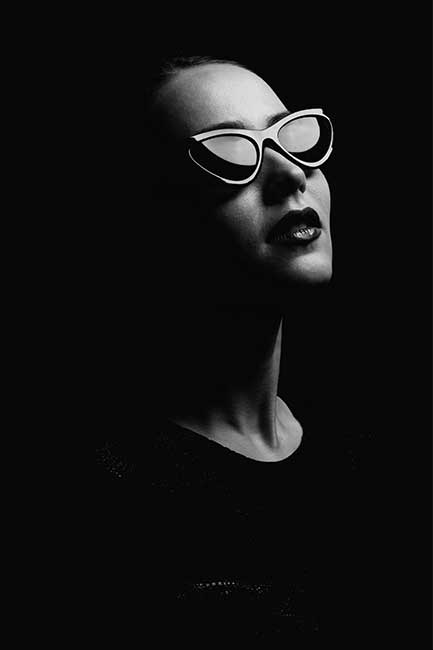
Three-Point Lighting
Three-point lighting is one of the most common lighting setups. It is traditionally a studio lighting setup. This lighting system can be created on-location in combination with ambient light. This setup uses three lights – the key light, fill light, and backlight. This lighting setup is very beneficial in Portrait Photography as it fully brings out details and the three-dimensionality of the subject’s features.
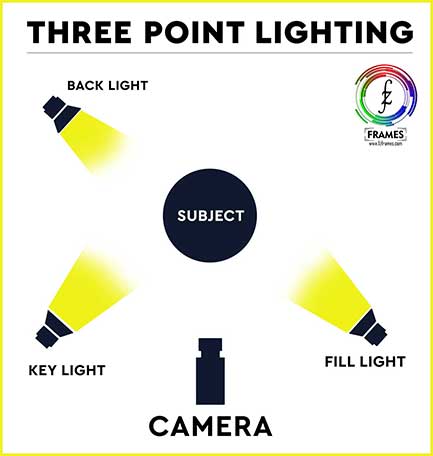
Key light : The key light, also known as the main light, is placed on either side of the subject’s face, usually between 30 degrees to 60 degrees. The purpose of the key light is to highlight the shape and feature of a part of the subject. The distance of the key light from the subject is important as it controls the intensity of shadows.
Fill light : The fill light is complementary to the key light. That is why it is also known as the secondary main light. The fill light is typically placed opposite the key light. For example, if the key light is placed 60 degrees left to the subject, then the fill light will be placed 60 degrees right to the subject. The intensity of the fill light will determine the mood of the image as the shadows will be controlled by the fill light.
Back light : The back light helps separate a subject from its background. As this light emphasizes on hair, it is also called hair light. Some photographers use the hair light to create lens flare and other artistic effects.
Butterfly Lighting
Butterfly lighting gets its name from the distinct shadow below the nose that often looks rather like a butterfly. Butterfly lighting is often called ‘Paramount lighting’. Butterfly lighting is achieved by placing the key light above and directly centered with the subject’s face.
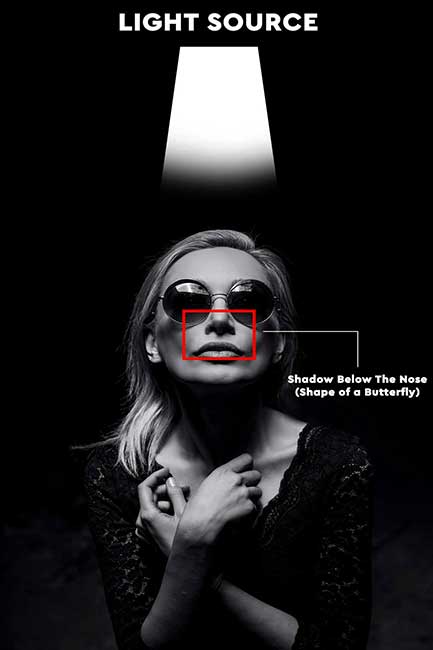
Since the light is coming from above and in front of the subject, it highlights the nose and cheekbones – making the subject look slimmer and the face longer. That is why it is also called ‘glamour lighting’.
Flash & Strobes
Flash and Strobe lights are the most used lights in modern professional photography. The lighting in portrait photography is typically diffused with a help of a softbox or an umbrella, this creates a very soft light. Whereas, hair and background lights are usually not diffused.
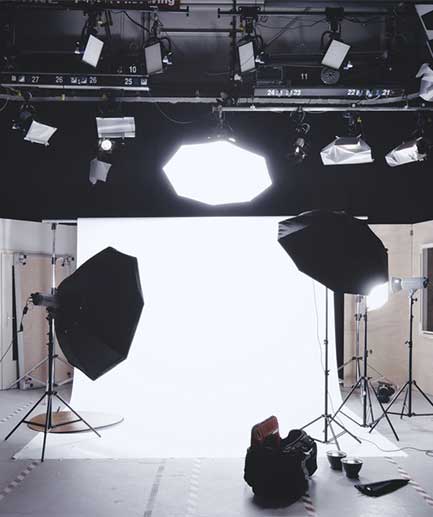
Great detailing is captured using flash and strobe lights. Other than Portrait Photography, fitness and fashion photography also makes the best use of flash and strobe lights.
Window (Natural Light)
Natural light from windows is a good source of light for portraits. Natural lights were only used till artificial sources of light were discovered. Window light limits options in portrait photography but gives ample room for experimentation. You can use a white reflector to reflect light into the darker side of the subject’s face. You can also use a diffuser which makes the light beautifully soft and rich.
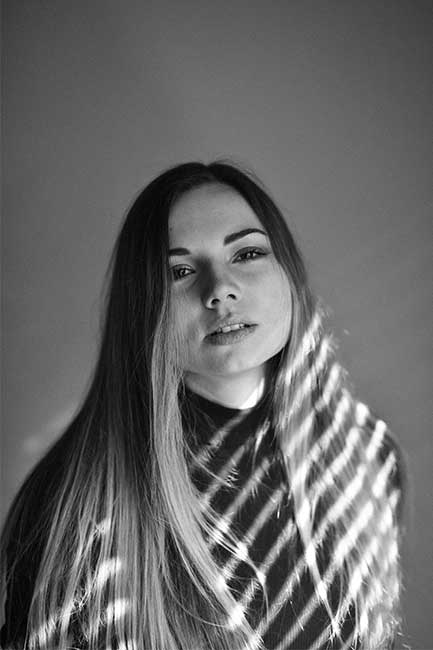
Window light gives the best results for a portrait in the early hours of the morning and during sunset time as well. In the late hours of the afternoon when light is more intense, that time is also good for silhouette and over-exposed shots. As discussed earlier, it’s all about your vision and creativity.
Digital Camera Settings and Lenses to use for Portraits
Let’s discuss Camera Settings, Lens Selection, etc. for Portrait Photography.
Always Try Shoot in Manual Mode
Photography is all about creativity and vision. If you have a particular shot in your head and you want to capture it in your camera, for that you need to select the shoot mode on your camera very carefully.
For different situations, you can select different modes. The most popular ones are :
- Manual Mode, if your camera is on a tripod.
- Aperture Priority Mode, when you’re shooting handheld.
These are just popular choices, we can try different things also.
Shooting in Manual Mode allows you to choose all your settings. This is a good option but it takes time to first understand and then master these settings. But once you master the settings on a Manual Mode, then it would be much easier to take photographs and even reproduce the images that you imagined.
Shoot in Aperture Priority Mode when doing something like Street Photography or Travel Photography.
ISO
You don’t want to go higher than 400 for a Portrait Shoot. Ideally, ISO should be 100 for Portrait Photo-shoots as you want the highest image quality possible. Higher the ISO, more noise will be there in your photos.
Now that’s for an ideal situation, but in some situations, higher ISO would be required to work well with other camera settings especially in low light conditions and during indoor shoots.
Focus Mode
Focus mode usually depends on how many subjects/persons are there in the photograph and what kind of movement the subject is making. In Portrait Photography there is usually one 1 person so it is recommended that we use single-point focus here. It is important to choose the focus point and not let the camera choose what to focus on.
Try to always focus on the subject’s eye. If one eye is closer to the camera than the other, focus on the near one.
You want the auto-focus to lock onto the subject. As we are discussing aboout Portrait Photography, you do not want tracking focus (that is for moving subjects).
It is important to keep checking your images to make sure that the subject is in focus. This problem occurs a lot when the light is low – the auto focus doesn’t always work then.
When To Use a Tripod?
Tripod is a great tool when doing long exposure photography, night photography, HDR bracketed shots, etc. Tripod provides steadiness to the shot and if you require more stability then use a remote along with a tripod for better results. Using Tripod forces you to slow down which is a good thing as it gives more time to think.
Manual Shoot Mode is recommended when using a tripod but other modes work well with tripod as well.
Which Lenses to Use for Portrait Photography?
There are a wide variety of lenses that can be used in Portrait Photography as we have seen earlier that there are different types of Portrait Photography.
We select Lenses as per our requirement. There are different requirements like : Shallow field of depth, closeup, environment, expressions, number of people, day or night, the distance between the camera and person, studio shoot, natural light shoot, etc.
Camera Sensor Size is an important thing to keep in mind before you go for any lens. It is important to know that whether your camera has a crop sensor camera or is it a full-frame camera. This is important because on a crop sensor camera a 50mm lens will give you an effective focal length of around 80mm.
There are some Street Photographers that prefer 50mm because they can get up close to the subject. 50mm is also widely used because of its versatility. There are always 2 versions of 50mm : one is expensive with a lower f-stop number and the other is affordable with a slightly higher f-stop number.
35mm is a choice for a lot of Outdoor Portrait Photographers as you would probably want a wider lens that is able to capture more people in a frame. 35mm on a full sensor produces images closest to that of a human eye. If you go wider than 35mm then the distortion of images starts to happen.
85mm is considered by many as the Best Portrait Lens. Actually, we also cannot disagree with this statement as it a great lens for portrait photography. 85mm lens has amazing compression which produces a very pleasing look. The focal length enables a comfortable working distance.
70-200mm : If you’re an event photographer who needs to capture portraits at large ceremonies, sporting events, weddings then this lens will work wonders for you. It gives amazing results even when shooting from a distance.
Bokeh Effect / Shallow Depth of Field : Images in which the subject is in focus and the background has a beautiful blur. To achieve that we use lenses that can shoot at a wider aperture such as f/2.8, f/1.8, or even f/1.2. A larger aperture gives your images a shallow depth of field and the blur is called Bokeh. A lens with a wider aperture is also better for low-light photography.
We have listed below the best lenses by the 3 most famous brands. We have made sure that the correct model is displayed here. We have also linked each lens with their respective page on Amazon. Just click on the lens name to go to their Amazon page.
Best Lenses for Portrait Photography (Canon, Nikon & Sony)
Best CANON Lenses for Portraits
1. Canon 35mm f/1.4

2. Canon 50mm f/1.2

3. Canon 50mm f/1.8 (Budget)

4. Canon 85mm f/1.2

5. Canon EF 85mm f/1.4L IS USM Lens

6. Canon 135mm f/2

7. Canon EF 70-200mm f/2.8L IS III USM Lens

Best NIKON Lenses for Portrait Photography:
1. Nikon 85mm f/1.4G

2. Nikon 50mm f/1.8G

3. Nikon AF-S Nikkor 35mm f/1.4G

4. Nikon AF-S Nikkor 24-70mm f/2.8

5. Nikon 58mm f/1.4G
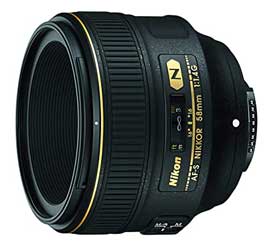
Best SONY Lenses for Portrait Photography:
1. Sony 85mm f/1.4

2. Sony 85mm f/1.8

3. Sony 50mm f/1.8

4. Sony 55mm f1/.8

5. Sony 70-200mm f/2.8

6. Sony 35mm f/1.4

Extra Tips & Tricks
There are several Tips & Tricks for Portrait Photgraphy. Here are a couple of them. You can read our article with full list of Tips & Tricks for Portrait Photography. But one thing every photographer must remember that its a form of art and there are no set of rules – its all about one’s creativity and vision.
Tip #1
Portrait Photography is all about personality, expression, mood, etc. – so it is very important to build a rapport with the person you’re photographing. For that keep talking to the person and try to make him/her comfortable.
Tip #2
Take test shots – analyze the light and check all your settings. Checking images after every couple of shots is a good habit – you don’t want to finish the shoot and then realize that the settings were off. Check images after every 2-4 shots and even show them to the person you’re photographing – it gives them a sense of involvement and a boost of confidence.
